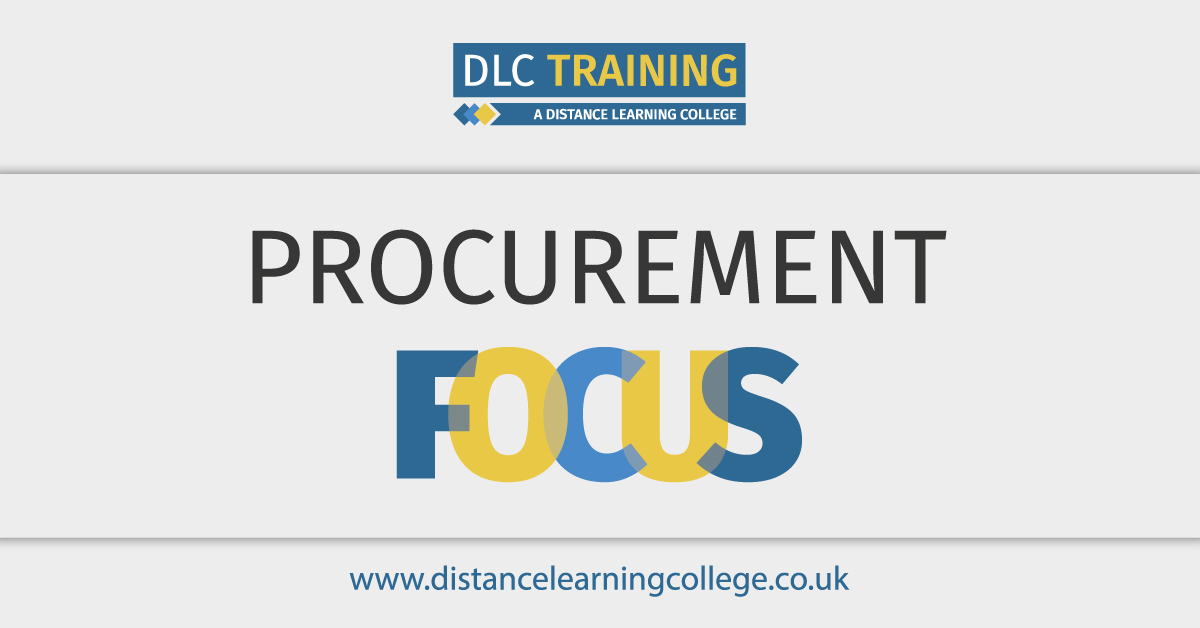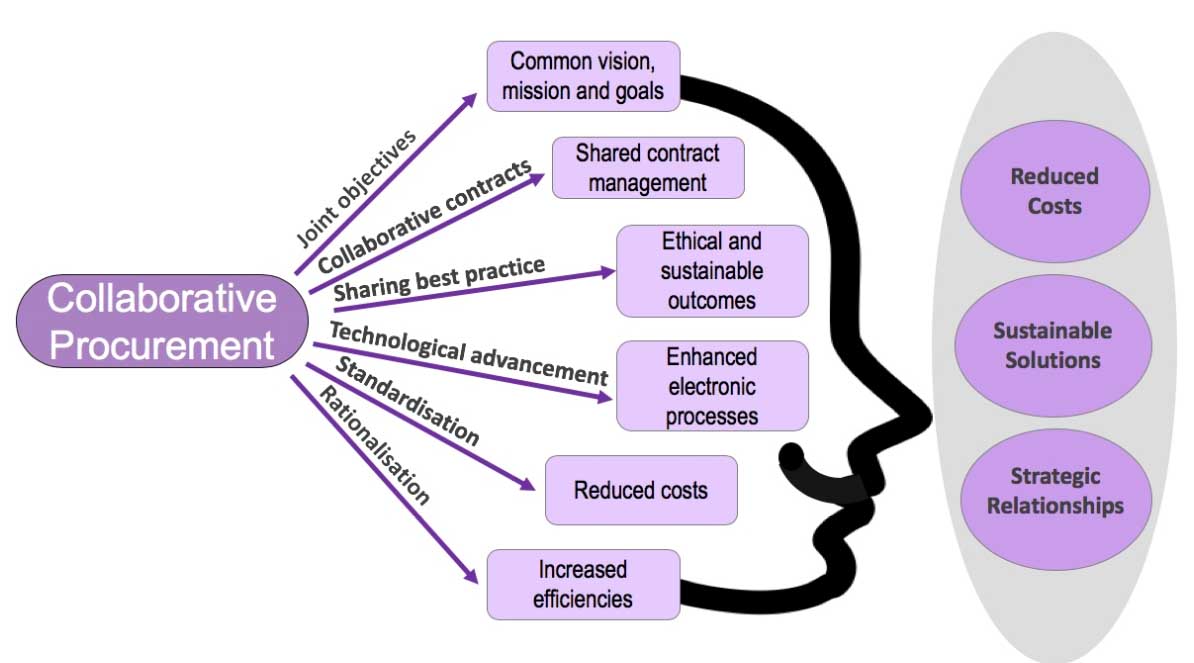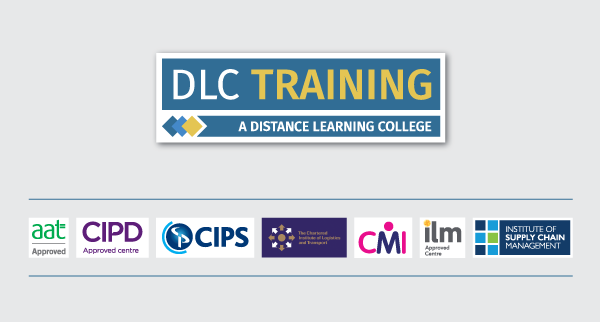
Collaboration is key in most industries, but especially within procurement. The many steps involved often have a domino effect on one another so it’s imperative to work together and build working relationships that benefit all parties to get the job done on time and at a high quality.
With supply chains becoming ever more complex, there is increased demand for collaborative working and for these relationships to deliver successful outcomes. This requires professionals to focus on the skills required to lead and manage these collaborations and change effectively.
What Is a Collaborative Relationship?
In procurement, a collaborative relationship is one that is based on sharing needs, expertise, experience, resources, risk and overheads to promote cost reduction, added value and innovation.
Sharing resources
Resources such as time, skills and money should be pooled. Collaboration relies on trust and open communication and honest feedback and as such these key areas should be shared in the relationships.
Sharing the risk
The risks associated with the project or procurement has to be shared in order for optimum mitigation to be prepared.
Sharing the cost
Finally, the costs associated with the project, research, development, specification creation or contract management should also be shared to show a willingness to create and maintain collaborative relations.
The Benefits of Collaborative Working in the Procurement

(Source: Jarvis-Grove, 2020)
Efficient Working
The benefits of collaborative working in the procurement can be vast. With open communication and strong teamwork, ideas can be increased, time to market reduced and the overall expenditure significantly reduced without compromising on quality. The objectives and goals can be shared, the results jointly embraced and the risks and challenges distributed to ease the pressure on one party.
Reduced Costs
Collaborative procurement can also achieve economies of scale through pooling requirements to obtain a lower cost. By using the combined buying power of several organisations, greater efficiencies can be achieved. Buying groups and co-operatives are champions of this form of collaborative procurement and in doing so obtain lower costs for their members and stakeholders.
Sustainable Solutions
Contracts can be collaborative to show a commitment to long-term working relationships. Best practice methods can be shared and adopted by all parties along with the adoption of technological developments and new systems or working such as EDI.
Standardisation of component parts can occur as well as rationalisation of supplier databases or processes which contributes towards the benefit of increased efficiencies, reduces costs, enhanced processes and ethical and sustainable outcomes.
Benefits such as shared contract management by collectively monitoring performance in the way of KPIs will be achieved through collaborative procurement and ultimately all parties within the collaboration will have a common vision, mission and shared goals.
Why Is Collaboration Important in Supply Chains?
We are seeing a new era of collaboration with a rise of inter-organisational collaboration across supply chains to combine scale, knowledge, skills and resources. In this scenario multiple organisations all come together to address challenges, deliver value and create efficiencies across the supply chain. This was particularly prevalent during the 2020 Coronavirus pandemic where multiple organisations, some competitors collaborated with the focus on designing, manufacturing and delivering 8,000 ventilators to the NHS in record time to support hospitals during the pandemic.
We now live in VUCA (Vulnerable, Uncertain, Complex and Ambiguous) times, a term derived from the US military in 1987, and there is a need to find effective solutions and opportunities to meet these challenges. Collaboration is a way of doing this through:
- Enhancing the collective performance in terms of value (total cost)
- More effective risk management
- Collective ownership for quality and timely delivery/execution
- Supportive environment for innovation
- Collective ethos that supports ethical, sustainable, and responsible business.
(Source: Loseby, 2021)
Collaboration Increases Resilience
Global and complex business environments need to have lean and global yet flexible operations, and therefore by nature are ever more vulnerable to supply chain disruptions, as highlighted throughout the global pandemic in 2020. This is why building supply chain resilience, a concept that reduces the impact of disruption by proactively identifying strategies that allow the supply chain to react while recovering to its original or even better functional state (Jüttner and Maklan, 2011), is of increasing interest to organisations.
Identifying, managing and mitigating risk should be a key priority therefore, it is of vital importance that a supply chain considers its adaptive capacity to respond to disruption and risk and become more resilient.
The Challenges of Collaboration
Whilst collaborative procurement and achieving and managing collaborative relationships are positive aspects of working within a supply chain, there are also challenges that could be faced along the way.
Trust
Building a high level of trust can take time. Until then, the lack of trust could interfere with the day-to-day work.
Power
Collaboration should be about being equal and sharing. However, on the way to achieving such a working relationship, there could be power struggles. Individuals that have previously had higher levels of control than others may struggle to relinquish that power. This could lead to conflict which would need to be resolved quickly and effectively for the collaboration to develop.
Culture
Different cultures, backgrounds, organisational structures or working methods could result in a setback on the journey to collaboration. Understanding and respecting all opinions, traditions, religions and beliefs is paramount for success in the development of a collaborative procurement opportunity.
Control
Control relates to which party or individual has the final say in key decisions. This links closely to power and some difficult conversations may have to take place to decide which party or individual has the control within a project or relationship should a decision need making.
Planning
Poor planning can cause collaboration to fail. All parties have their responsibilities and roles and should take them seriously, meeting all deadlines to ensure the whole collaboration process can be effective.
Resources
Without enough resources collaborative procurement could fail. Enough resources should be available from all parties to ensure that the shared objectives, goals and visions are achievable.
Indecisiveness
Decision-makers are key to productive collaboration and as such indecisiveness should not occur. Decisions need to be made in a professional and timely manner to keep collaborative operations moving.
Communication
The final step in the model is communication. Without effective communication, collaboration will not work. Communication can be a challenge if things are not shared with the cross-functional team if concerns are not raised or if feedback is not delivered.
Communication may be the last step on the model but it is probably the most important challenge within collaboration. If communication is not happening in a two-way form, the collaboration will neither occur nor succeed.
8 Tips for Success in Collaborative Working
Thankfully there are some key things that can help you collaborate more effectively and in a way that will help all those involved reach their goals.
- Willingness and a “want” to collaborate
- Clear and demonstrable benefits
- Effective and proactive sponsorship
- In for the long term
- Clear scope and clarity of how the collaboration (partnership) will work: The who and how each party gets the share of the benefits
- Absolute transparency
- Unquestionable trust (organisational and individual)
- Effective listening and communication by all parties
(Source: Loseby, 2021)
Explore the full range of IoSCM and CIPS courses available at DLC Training to understand more about the role collaboration plays in procurement and the wider supply chain.
